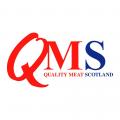The ability to draw on the support of industry experts and the Shetland Islands farming community, has been the main benefit of the Monitor Farm Programme for Kirsty and Aimee Budge.
“It’s given us tonnes of support and helped with how we make business decisions,” said Aimee at the recent final meeting of the three-year programme. “The Monitor Farm Programme has made us look at our costs in greater detail, and how we can reduce them, so our business is more profitable.”
With farmers and crofters on Shetland facing some unique challenges, coming together through regular monitor farm meetings has helped with knowledge sharing and collaboration within the community. The initiative has brought all ages of the farming and crofting community together to find solutions to tackle key issues.
Kirsty told farmers and crofters attending the final meeting at Bigton Hall that the technical support available through the monitor farms network has enabled them to make big changes.
She explained how the pair have started using a plate meter to monitor grass and rotationally paddock graze, which has increased grass yields. This, together with taking on an additional 500-acre block of rented land, has allowed the business to increase suckler numbers by 20 and ewes by 310 head. This has gone hand-in-hand with starting to breed their own replacements.
At the beginning of the programme it was recognised that more needed to be done to help market smaller, traditionally lower value Shetland lambs from the Islands. The Shetland Hill Lamb Group has subsequently been set-up and lambs marketed for export to Europe for the Christmas markets. This has increased value by about £10-12/lamb.
Aimee said this developing market gave them confidence to take on the Shetland ewes as they knew they had an outlet for the pure lambs.
Kirsty added: “The price was so poor before, but through this group you can add value to the product and it makes it worthwhile.”
Lambs from the cross-bred flock are now sold deadweight, which has also increased returns. Selling beef direct to the consumer through a box scheme has also proved worthwhile.
Lambing losses from scanning to weaning have reduced from 26% to 13% by grazing ewes and lambs on alternative grazing, away from cliff edges. The number of calves weaned has also increased from 81% to 93%. The aim is to increase weaning percentage further to dilute the business’ relatively high machinery costs.
They’re also looking to out-winter in-calf heifers for an extra month by improving deferred grazing management.
Shetland Monitor Farm programme facilitator, SAC’s Graham Fraser, added: “Shetland as a whole has benefited from seeing what Bigton is doing and lots of farmers have taken bits home to give them a go. It’s helped encourage folk to be much more open about their own businesses and encouraged a much clearer exchange of ideas and experiences in Shetland.”
Catch-up on the QMS
Meat the Future Conference on Facebook
Visit the Quality Meat Scotland (QMS) Facebook page to view photos and highlight videos from speakers who presented at the recent QMS Meat the Future conference.






Comments: Our rules
We want our comments to be a lively and valuable part of our community - a place where readers can debate and engage with the most important local issues. The ability to comment on our stories is a privilege, not a right, however, and that privilege may be withdrawn if it is abused or misused.
Please report any comments that break our rules.
Read the rules hereComments are closed on this article